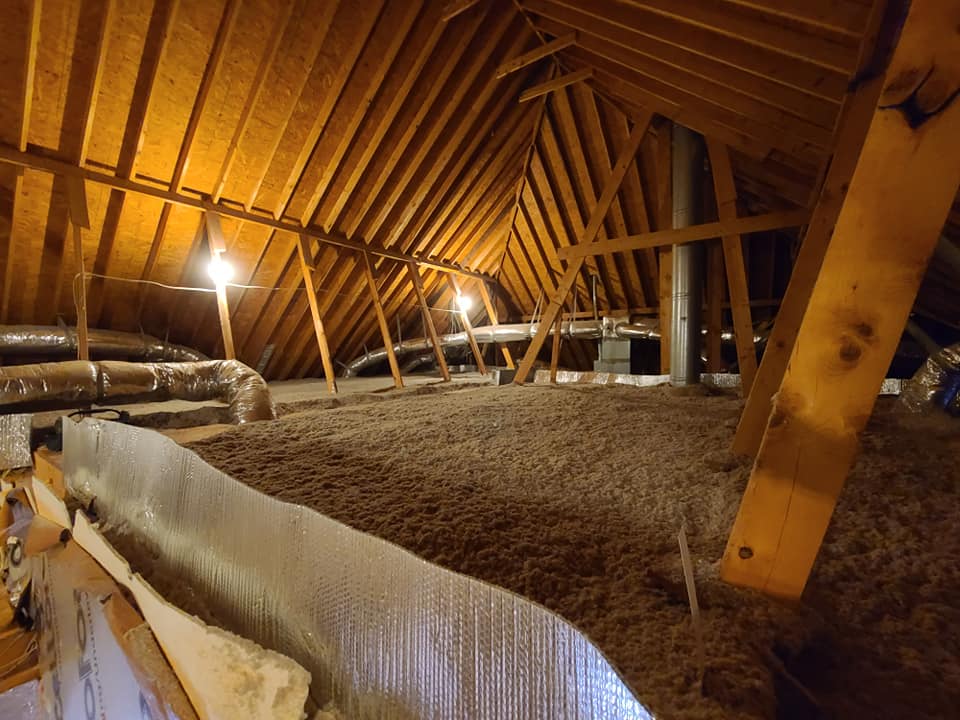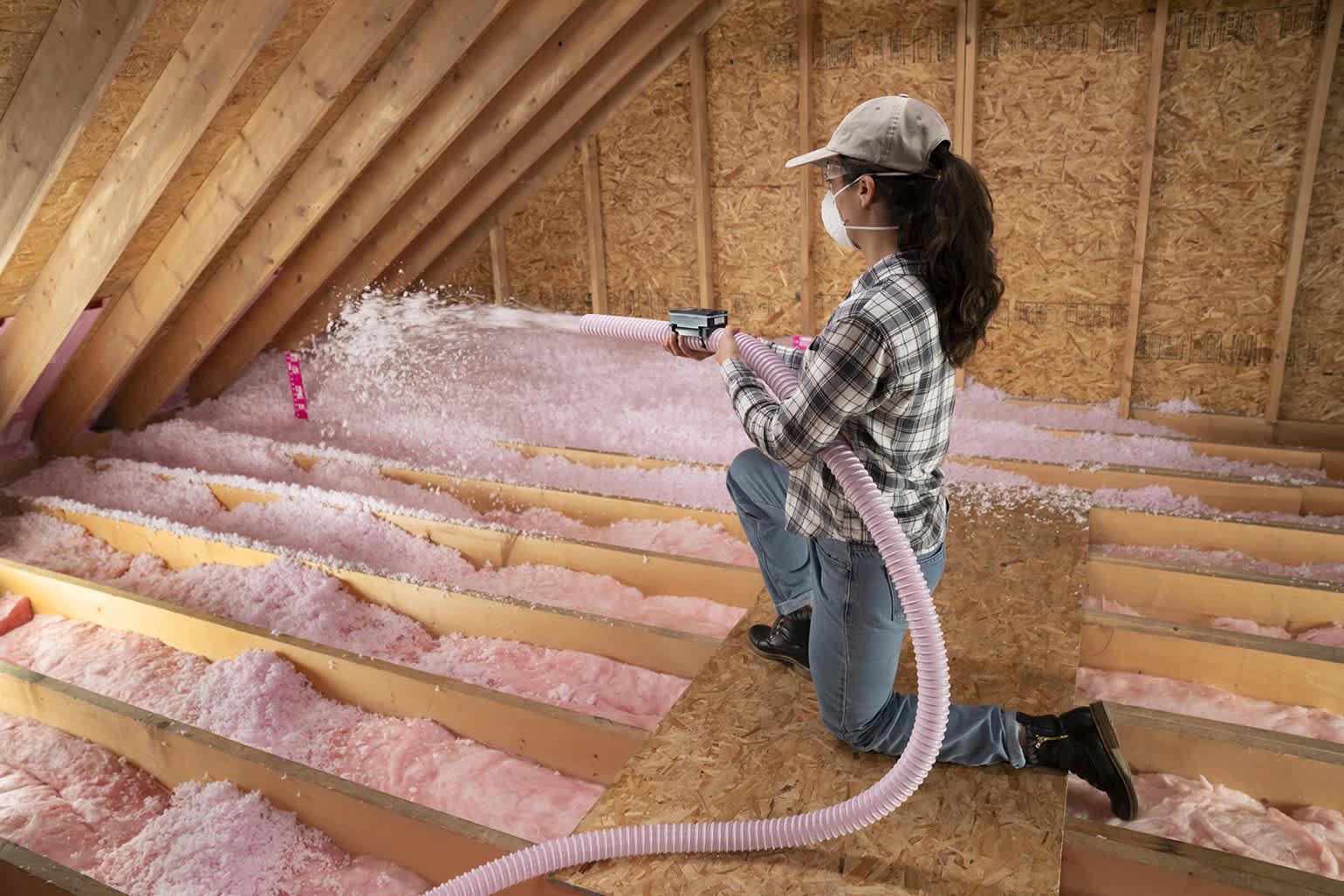Save Money and Boost Comfort with Specialist Attic Insulation DFW
Save Money and Boost Comfort with Specialist Attic Insulation DFW
Blog Article
Discover the Various Kinds Of Attic Insulation and Their Special Benefits for Your Home's Power Effectiveness

Fiberglass Insulation
Fiberglass insulation is among the most typically utilized materials for attic insulation due to its excellent thermal performance and cost-effectiveness. Composed of small glass fibers, this product effectively traps air, producing an insulating obstacle that aids keep constant indoor temperature levels. Its high R-value per inch makes it particularly reliable at standing up to warm transfer, which is important for energy preservation in homes.
Installation of fiberglass insulation is fairly simple, usually available in batts or loose-fill forms, suiting numerous attic setups. In addition, it is non-combustible and resistant to dampness, minimizing the risk of mold and mildew advancement. This longevity contributes to its longevity, making fiberglass a viable long-lasting investment for property owners.
In addition, fiberglass insulation is usually produced from recycled materials, which enhances its eco-friendliness. The product can also add to soundproofing, reducing noise transfer in between rooms. While it is vital to use safety equipment during setup to prevent inflammation from the fibers, the overall benefits of fiberglass insulation, including energy cost savings and ecological considerations, make it a prominent selection for improving attic efficiency and advertising a comfy living environment.
Spray Foam Insulation
Spray foam insulation is a very reliable alternative for attic insulation, known for its remarkable air sealing and thermal performance. This ingenious insulation material is made up of a combination of isocyanate and polyol resin, which, when combined, broadens quickly to fill spaces and tooth cavities in the attic space. Its capability to follow different surfaces ensures a constant obstacle versus air leaks, substantially lowering heat loss during cooler months and warm gain during warmer seasons.
One of the vital benefits of spray foam insulation is its high R-value per inch, which suggests it gives exceptional thermal resistance in a relatively slim application. This is especially beneficial in attics where space is commonly restricted. Additionally, spray foam can help decrease dampness build-up, lowering the risk of mold and mildew development, which can be destructive to both the framework and indoor air high quality.
While the preliminary expense of spray foam insulation might be more than conventional choices, its lasting energy savings, paired with raised convenience and improved home value, make it a rewarding financial investment for property owners looking for improved energy performance. Attic Insulation DFW. On the whole, spray foam insulation stands apart as an efficient option for maximizing attic insulation
Cellulose Insulation

Cellulose insulation is a prominent choice for attic room insulation, largely made up of recycled paper items treated with fire retardants. This eco-friendly choice is known for its superb thermal performance, successfully reducing warmth transfer in both summertime and cold weather. The dense composition of cellulose enables it to fill voids and voids in attic room areas, supplying a smooth barrier against air leaks.
One of the substantial advantages of cellulose insulation is its capability to withstand mold and pests, owing to the fire resistant therapies made use of during manufacturing. Furthermore, it flaunts a high R-value per inch, which equates into premium energy efficiency. Home owners can expect lower home heating and cooling costs as an outcome of boosted insulation.
Installment is generally completed with blowing loosened cellulose into the desired location, permitting for a efficient and quick procedure. This technique additionally decreases disturbance to the existing structure. In addition, cellulose insulation has a relatively reduced environmental effect, as its manufacturing procedure uses recycled materials, adding to lasting building practices.
Rock Wool Insulation
Amongst the different choices for attic room insulation, rock woollen, additionally referred to as mineral wool, attracts attention because of its remarkable thermal and acoustic efficiency. Made from natural or recycled products, rock wool is created by thawing rock and rotating it right into fibers, causing a product that offers superb insulation homes.
Among the significant benefits of rock woollen insulation is its high R-value, which indicates its efficiency in resisting heat circulation. This particular not only enhances power efficiency yet additionally contributes to preserving a comfy indoor temperature year-round. In addition, rock wool is naturally fireproof, making it a safer option for homes as it can endure high temperature levels without melting or launching hazardous fumes.
Moreover, rock wool insulation succeeds in soundproofing capacities, properly decreasing noise transmission between spaces and from outside sources. This makes it an ideal option for property owners looking for a tranquil living atmosphere. Rock wool is moisture-resistant, aiding to protect against mold development and keeping the architectural integrity of the attic area. Overall, rock woollen insulation gives description a comprehensive service for boosting energy effectiveness, safety and security, and convenience in domestic settings.
Radiant Barrier Insulation
Radiant obstacle insulation functions as an efficient solution for reducing warm transfer in attics, particularly in warmer climates. This kind of insulation works by showing induction heat away from living spaces, thus minimizing the amount of heat that gets in a home throughout heat - Attic Insulation DFW. Generally made up of a highly reflective material, such as aluminum foil, radiant barriers are set up in attics, facing the roofing, where they can obstruct inbound warmth from the sun
The main advantage of glowing barrier insulation is its capability to lower cooling prices. By mirroring warmth instead of absorbing it, glowing obstacles can help preserve an extra secure interior temperature, lowering the work on cooling systems. This performance translates right into reduced power costs and raised comfort for property owners.
In addition to energy cost savings, radiant obstacles can also add to boosted interior air high quality. By minimizing warmth accumulation, they aid reduce humidity levels, which can avoid mold and mildew development and boost overall air circulation. When mounted correctly, radiant obstacle read more insulation can be a very useful enhancement to any energy-efficient home, making it a deserving consideration for house owners seeking to boost their attic insulation strategy.
Final Thought
In conclusion, understanding the different kinds of attic room insulation-- fiberglass, spray foam, cellulose, rock wool, and radiant barriers-- makes it possible for homeowners to make informed decisions concerning energy performance. By picking the ideal insulation material, considerable reductions in energy costs can be achieved, along with improvements in interior convenience.

In final thought, recognizing the different types of attic room insulation-- fiberglass, spray foam, cellulose, rock wool, and glowing barriers-- makes it possible for house owners to make informed choices go to this site relating to energy performance.
Report this page